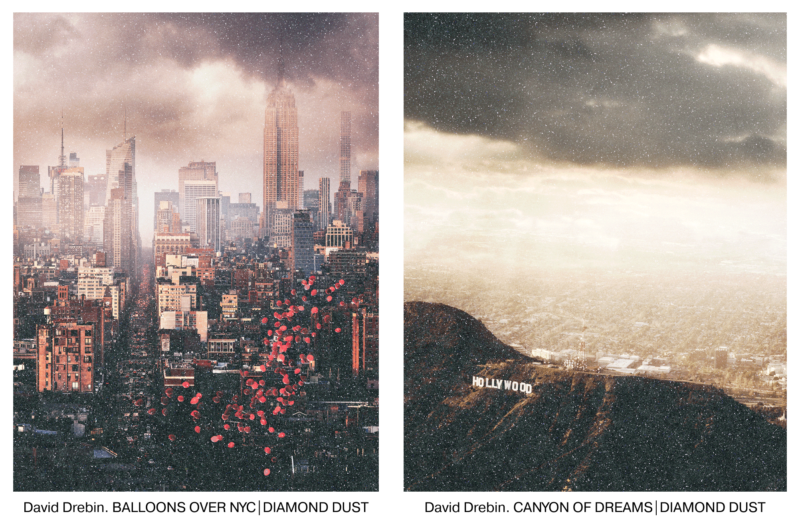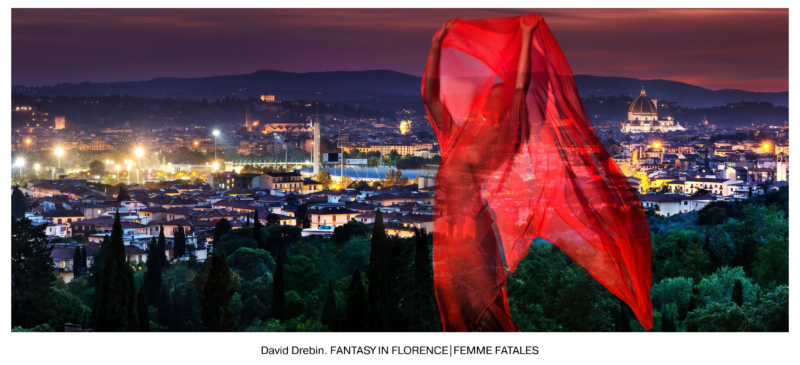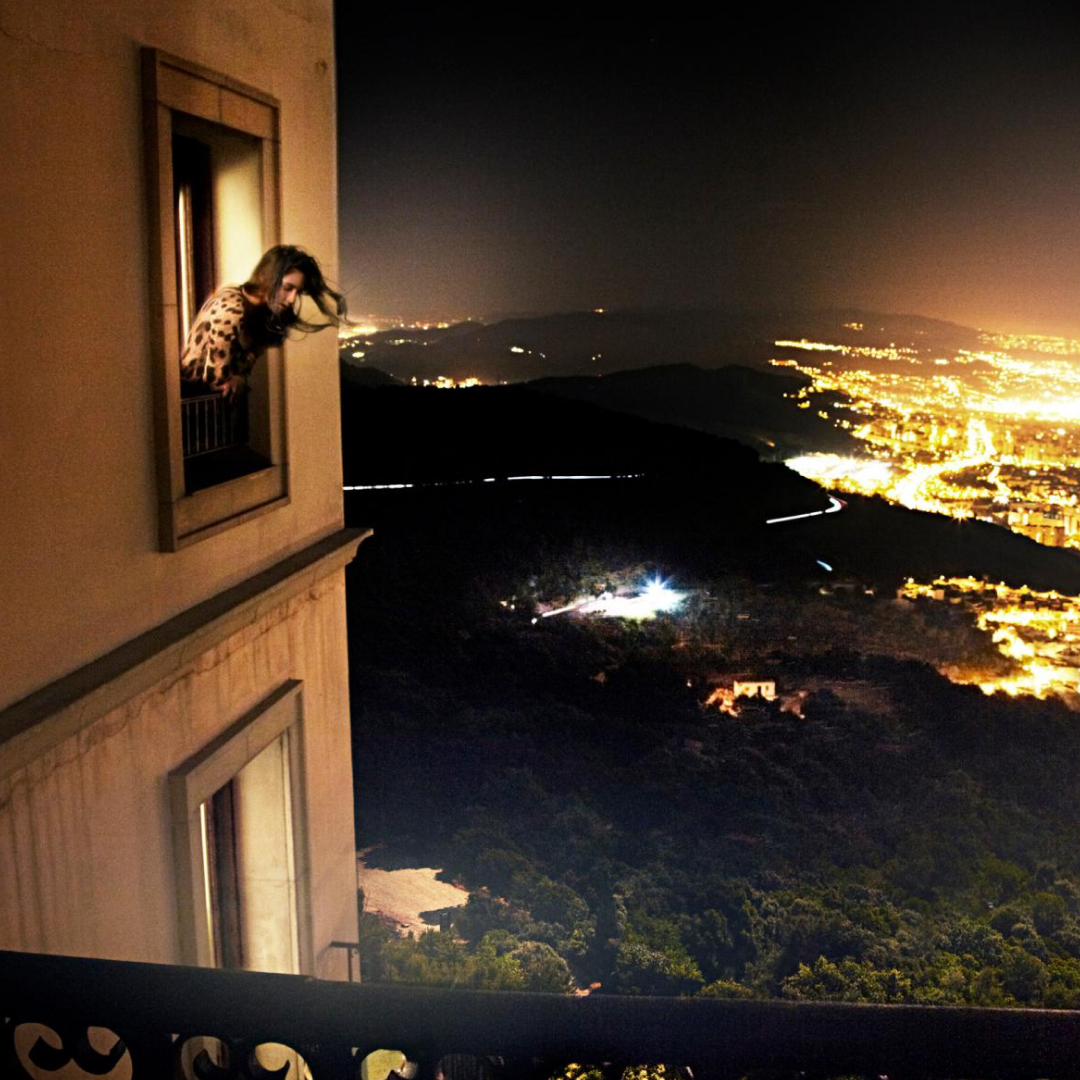David Drebin is a multidisciplinary artist creating immediately recognizable photographs, lightboxes, neon light installations, and more.
Falling in love with New York City thirty years ago, he has developed an even stronger connection with it over the years. The city never ceases to inspire him, as well as his long-time muses.
Fine Art Shippers had the pleasure of speaking with David Drebin about his vision of art, his life philosophy, trust, and, of course, his love for New York.
Artist Talk: David Drebin on the Most Spectacular Views of New York
What inspired you to pursue photography? How did your upbringing in Toronto shape your personality and artistic perspective?
David Drebin: Where I'm from has nothing to do with my artistic inspiration. It all began with a trip to New York City in my early twenties. The city's energy ignited my imagination, and I felt the need to explore it. I used a camera to bring the magic in my mind to life, creating photographs from the images I saw in my head. The camera became a tool to understand my thoughts better and transform them into tangible images on paper. Photography is indeed magic, as long as you have the technical expertise to make that happen.
You mentioned the magic of New York City and how photography became a tool to capture it. Did you start creating your signature dreamlike photographs right from the beginning, or did you initially focus on something more realistic, like street photography?
When I attended Parsons School of Design in the nineties, I only shot in black and white. I didn't take a single color photograph during my time there. After graduating, I would walk around the streets of New York with my camera but often returned without taking any images. I realized that I should be making photographs, not taking them. I began creating my own scenes and using outdoor lighting to achieve this.

Could you explain how you combine actual city views with other layers, such as portraits of people?
Every situation is different. I don't analyze my process too much, I just have a vision. It's not about wanting to make the photograph—it's about needing to create the image that's in my mind.
So first, the image is born in your imagination, and then you find artifacts and views in your surroundings to bring it to life, right?
I enjoy shopping for props and searching for inspiring views. For example, I went to Agent Provocateur a month ago and bought a bunch of props. They’re still sitting here, wrapped, waiting for the right moment to be used. As for the models in my work, they don’t change: I've worked with the same muses for the last 25 years. I rarely photograph new people.
Could you tell me more about how you work with your models?
They are all my close friends. As a straight male photographer working with beautiful women, I need to build trust over the years to create magic together. It's similar to how a psychotherapist builds trust with their patients and chefs with their guests. This bond between us only gets stronger over time, making our process easier and more and more fulfilling, like having a heartfelt conversation.
I'm curious about how you got the idea of adding diamond dust to your images. What quality did you want to achieve?
Again, it’s an image coming from my imagination. I wanted to elevate my prints with an additional physical layer. My team and I sprinkle real diamond dust on them. These are not just digital special effects you can find in various applications
You also create sculptures and neon text installations. What motivated you to try these particular mediums?
As an artist, I believe it's important to grow and diversify. I began creating sculptures with my team as an extension of my photography, using 3D prints of photos of my muses. Regarding the neon works, while a picture says a thousand words, words can also inspire thousands of images in your mind. This was a reversal of the concept behind my photographs. It was about balancing two symbolic systems.

Would you like to try other mediums?
Today, I'm more motivated by public speaking to spread my message to the world, which is about finding the magic in the madness and the madness in the magic. Sometimes the worst experiences make the best photographs. I used to have a lot of drama in my life and art, but now I love to create and market drama through my art while keeping my personal life calm and drama-free.
Interesting—similar to making theater…
Yes, there’s a theatrical aspect to it, and I'm inspired by it, too. I love going to Broadway shows. You can see the actors getting the audience emotional, but they remain logical within their emotions.
You mentioned your team. How do you collaborate with them, and how many people are on your team?
I love collaborating with talented people. I have a large team all over the world, including manufacturers in New York, Berlin, Miami, London, and Paris, as well as distributors and art galleries globally. I have video producers in Serbia, Ukraine, and Argentina, and IT specialists in Cairo. I’m thankful to all of them and make a point of showing my appreciation. After all, art is not about money, it’s about feeling valued.
New York captivated you many years ago when you first came there. How do you feel about this city today?
I struggled in New York for many years, living in a very small apartment at 100 Sullivan Street in SoHo. Now, I live on Madison and 30th with epic views of the Empire State and Chrysler Buildings, which inspire me every single day. I always wanted this, and it took me 25 years to achieve it.

Can you tell us about your current projects?
We are working on our 10th book with teNeues, which will be published in the spring of 2025. It will be called "I Love New York" and will feature all my images from the last 30 years. Putting it together takes a lot of time and effort, but it’s very rewarding. It’s like making a movie: editing all the works, ensuring smooth production, and marketing the book… I don't have a goal of selling it— I want to give it to those who've supported me over the years.
How do you sort your archive from the last three decades? How do you decide what to keep and what to discard?
That's a great question. I'm my own harshest critic. If I don't think an image is good enough, I don't show it to the world.
In conclusion, what do you think is essential for a creator to succeed in the art world?
I never thought about the industry or the competition. I only focused on creating my art for many years and distributing it worldwide, as opposed to being a service for hire. There's room for everyone if you're good enough and have enough perseverance and passion.
Interview by Inna Logunova Photo courtesy of David Drebin
